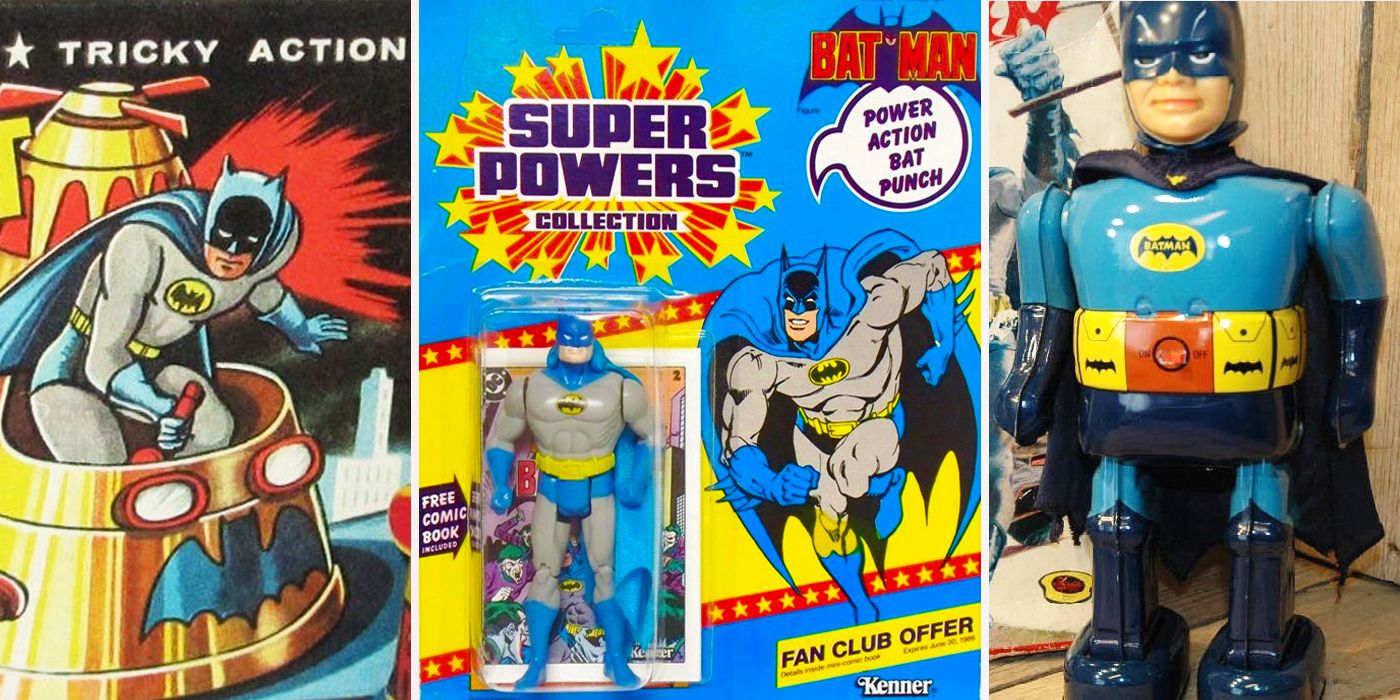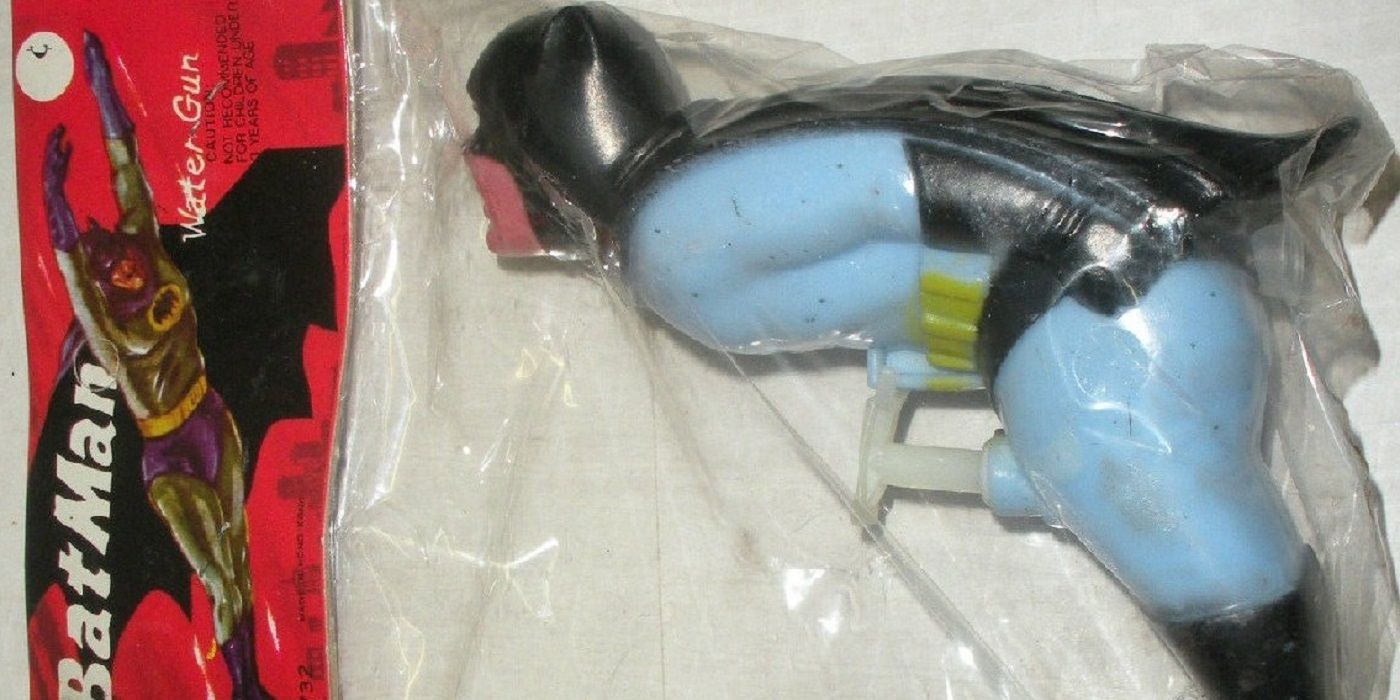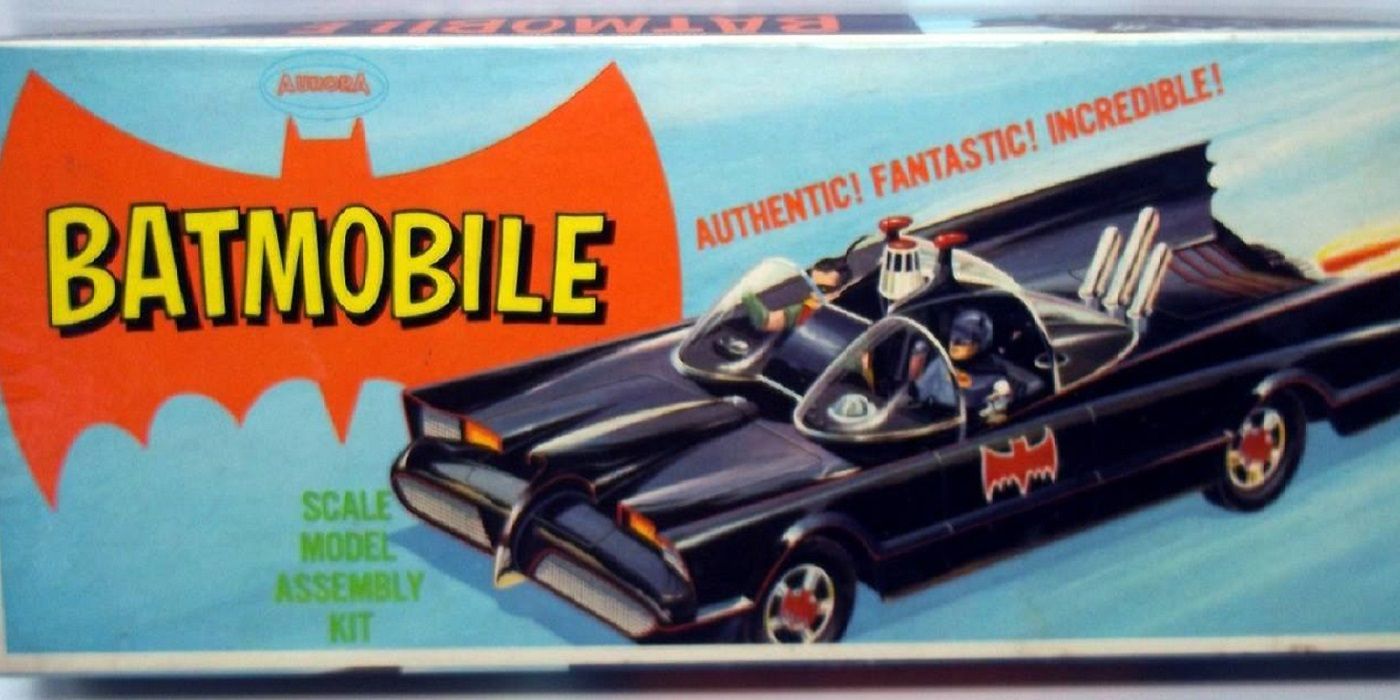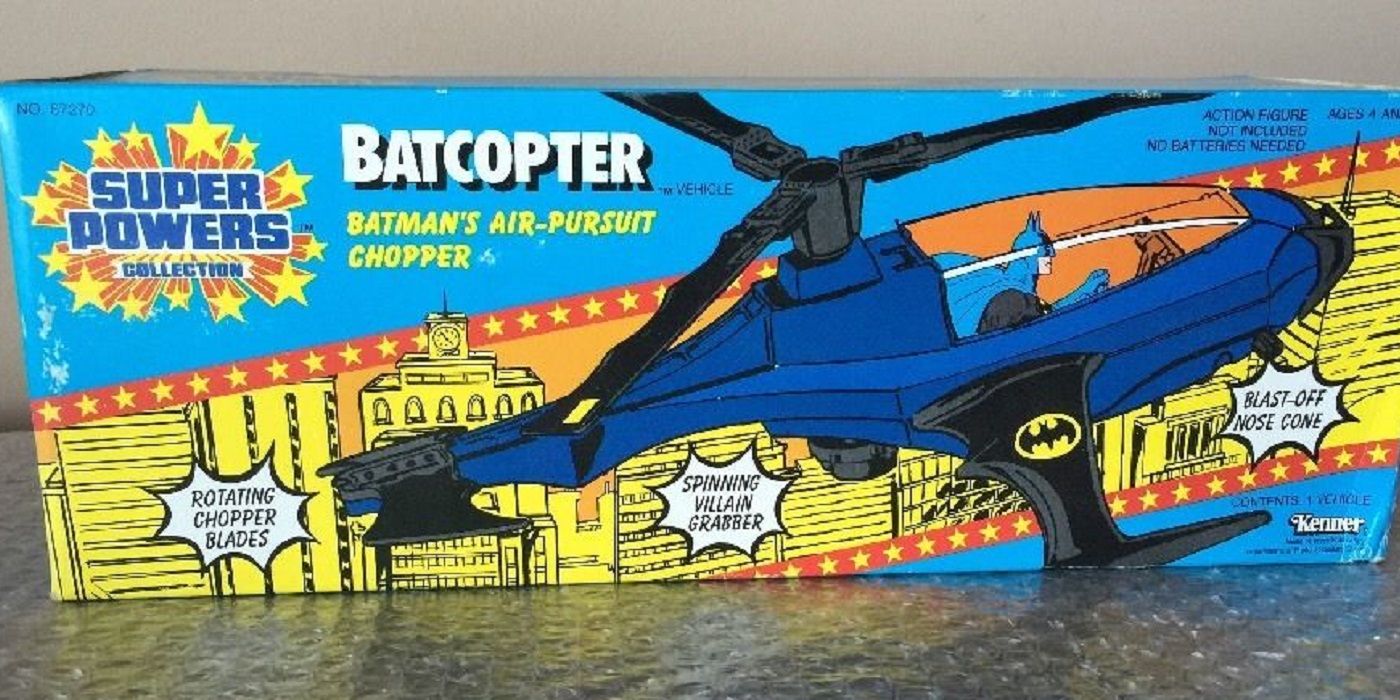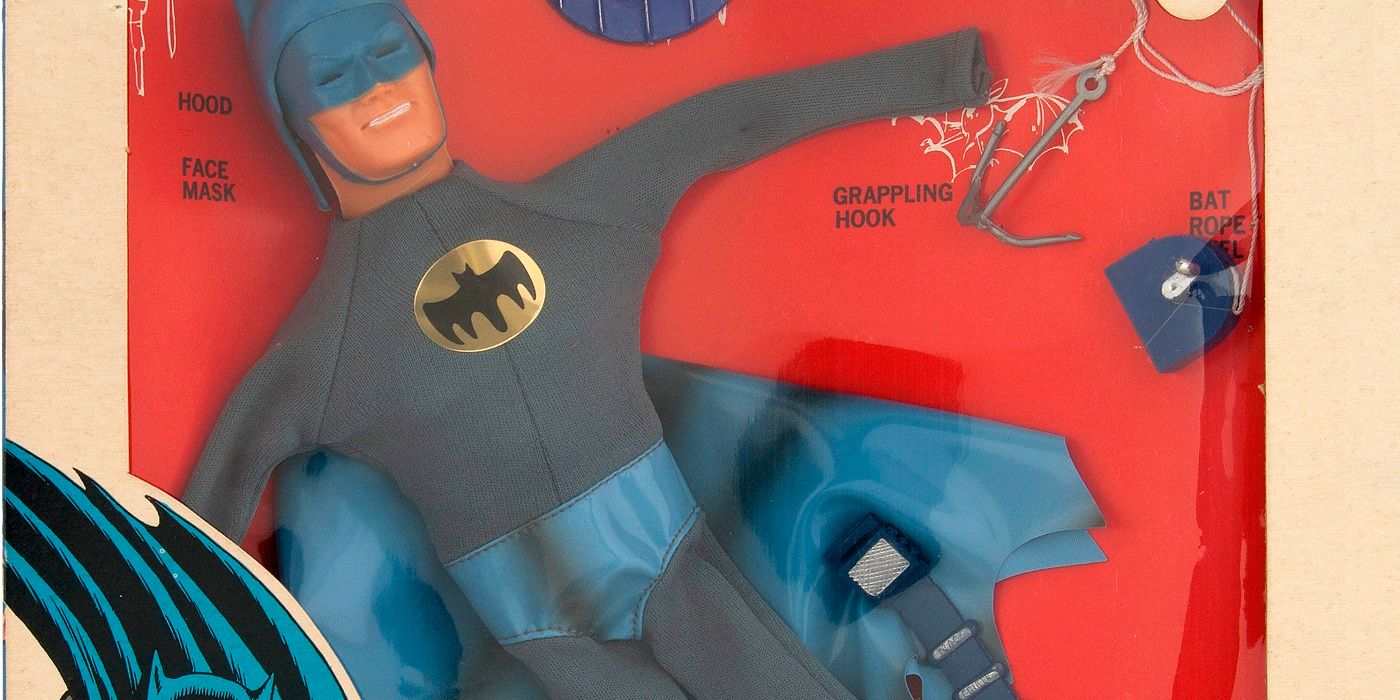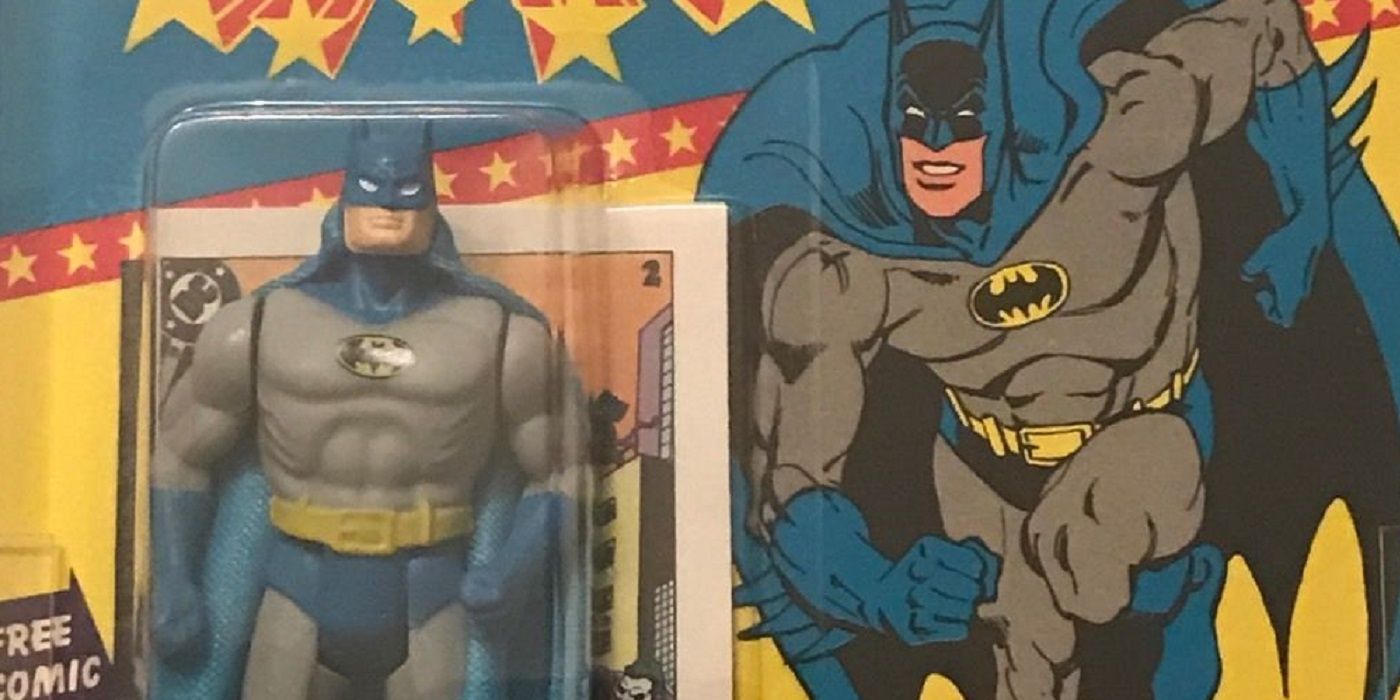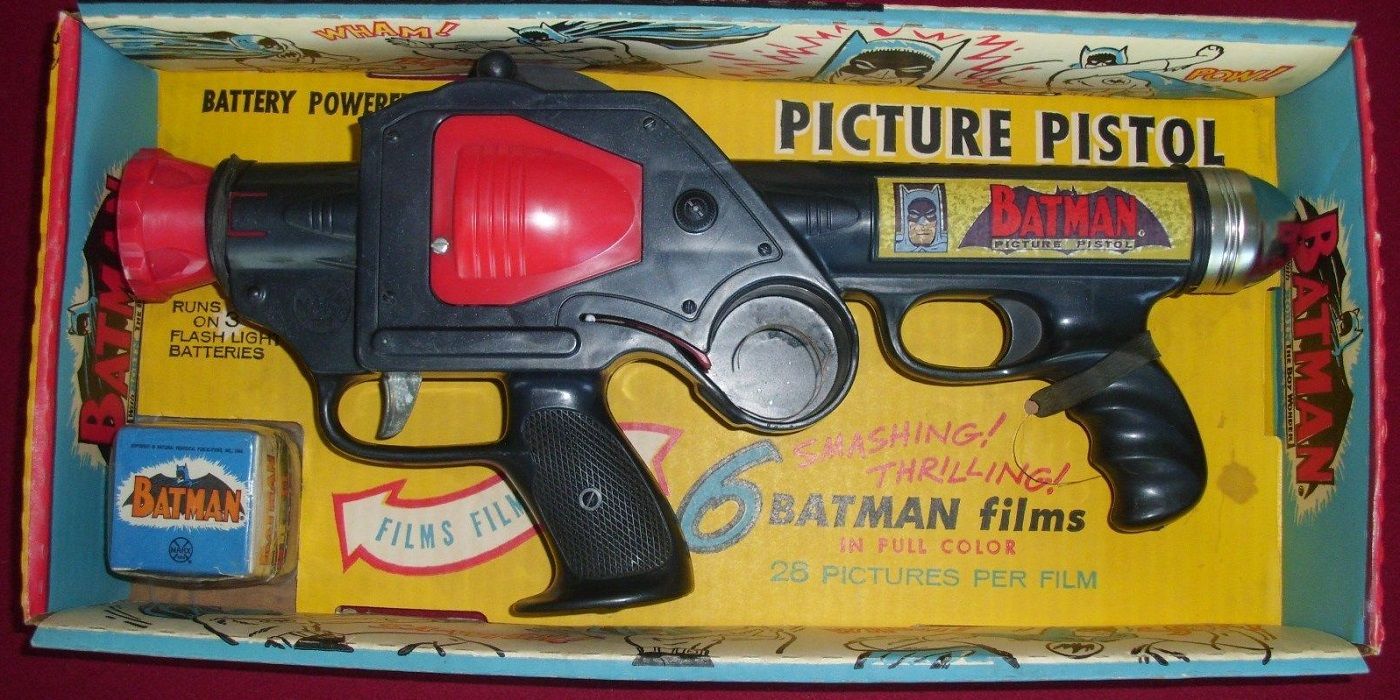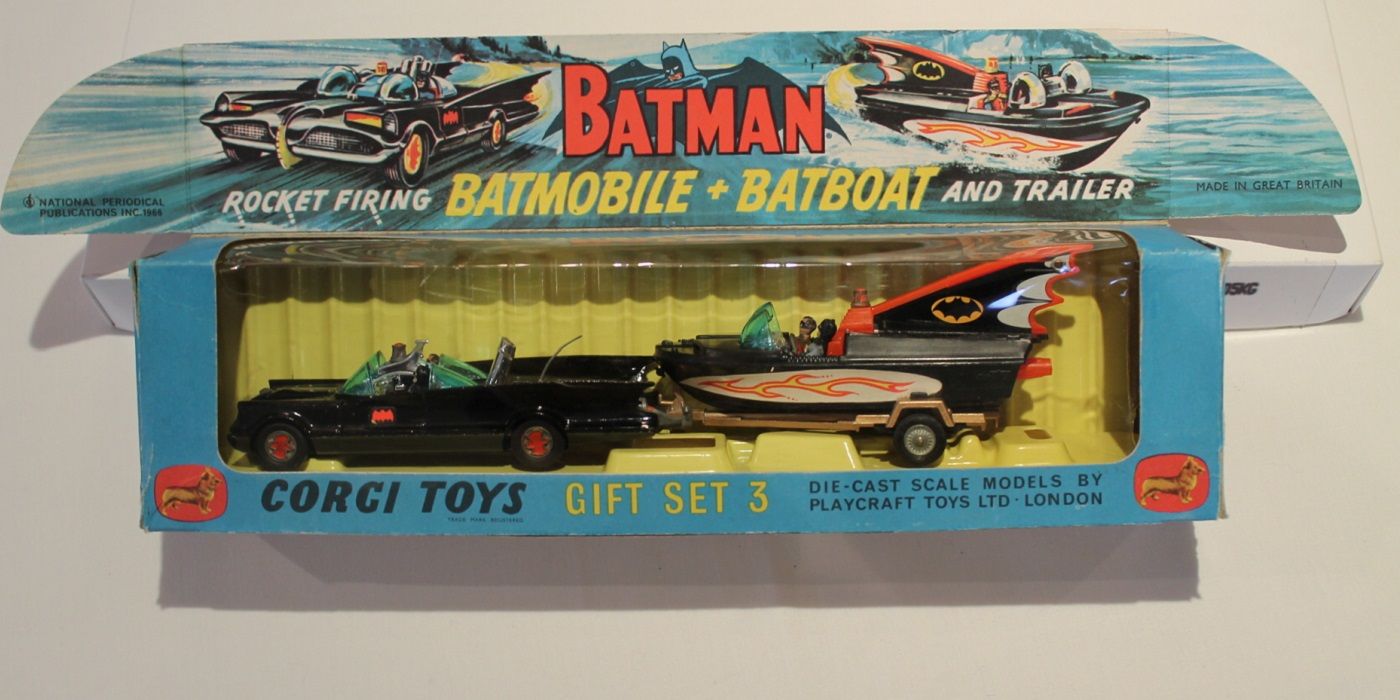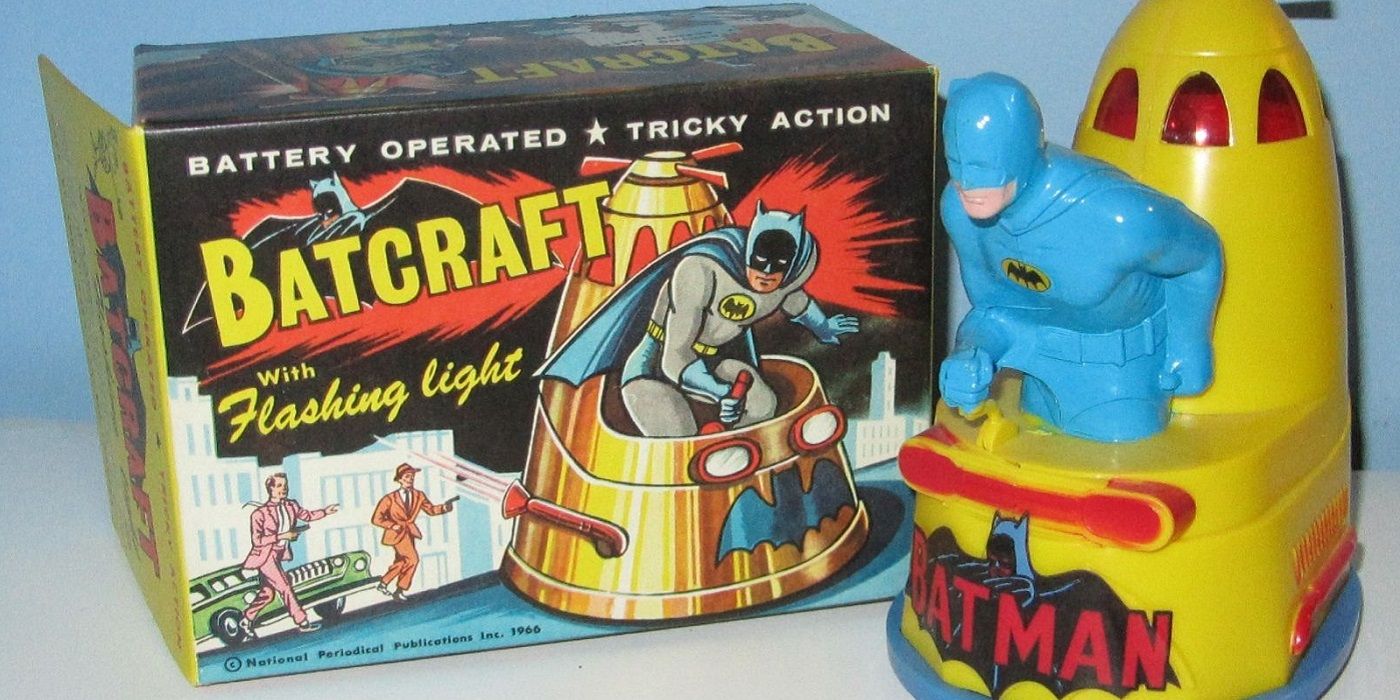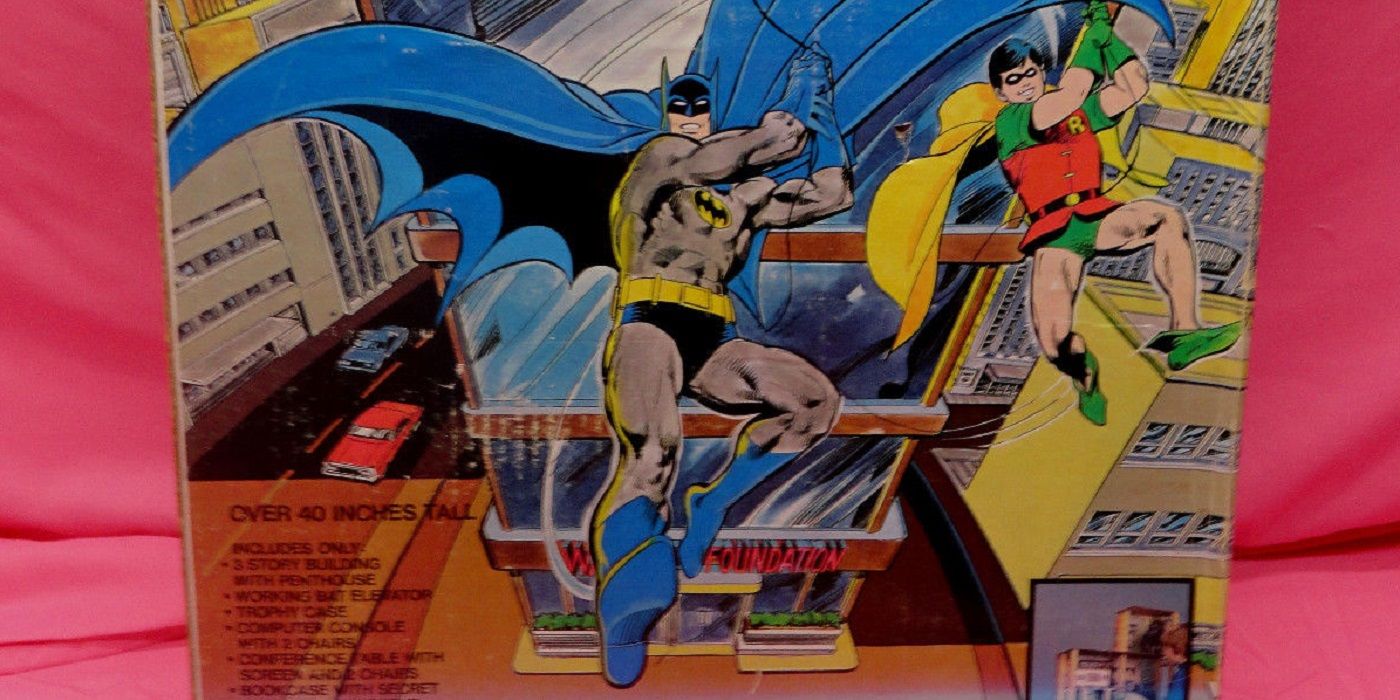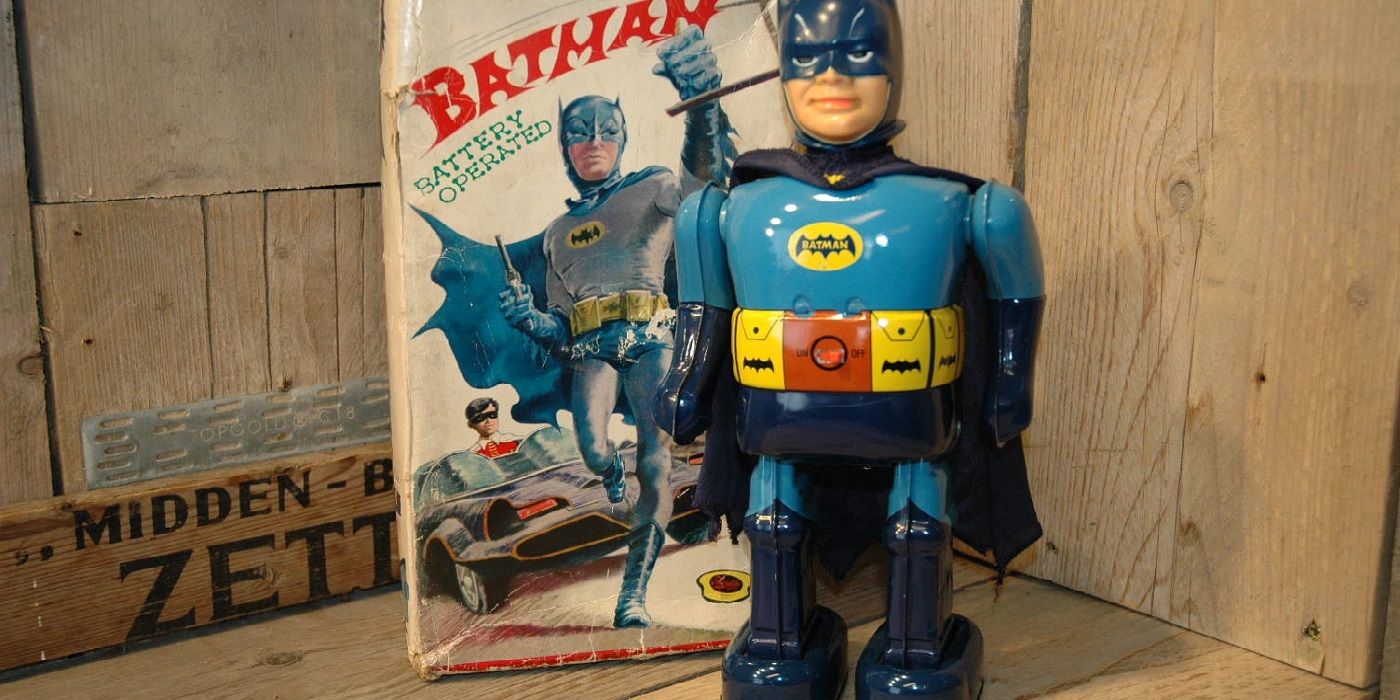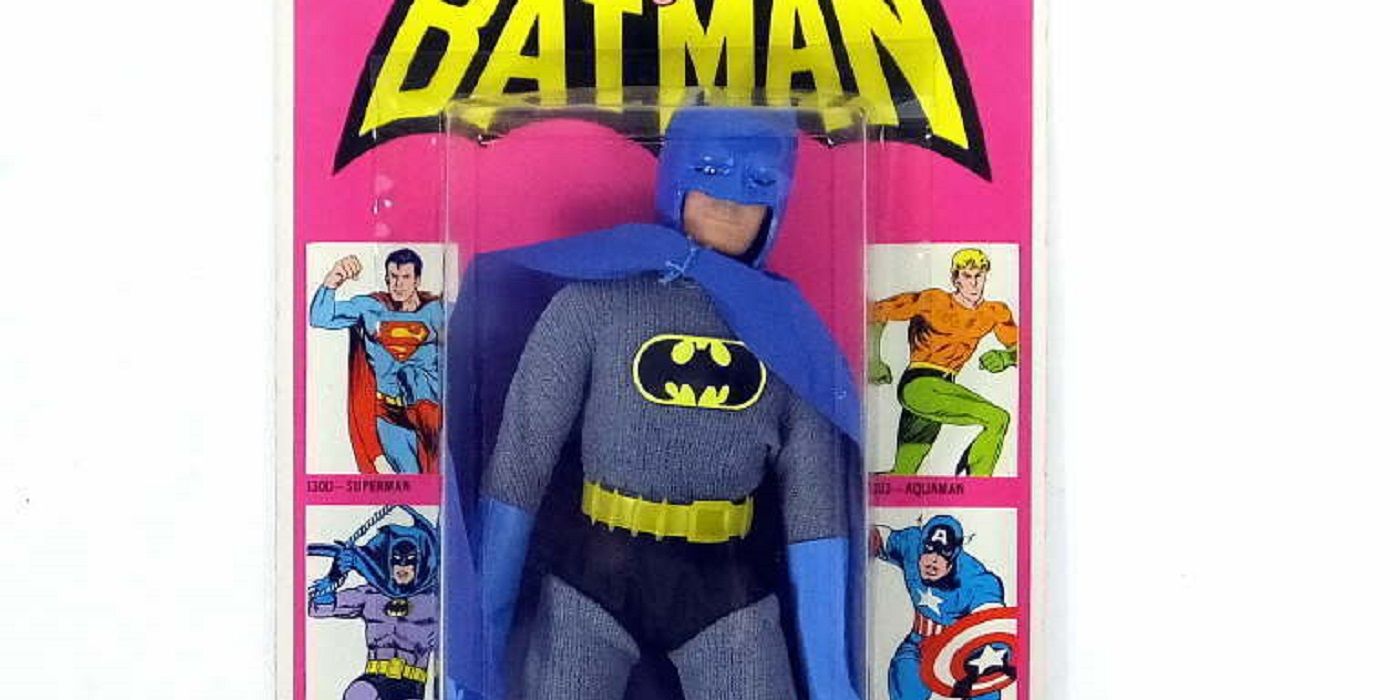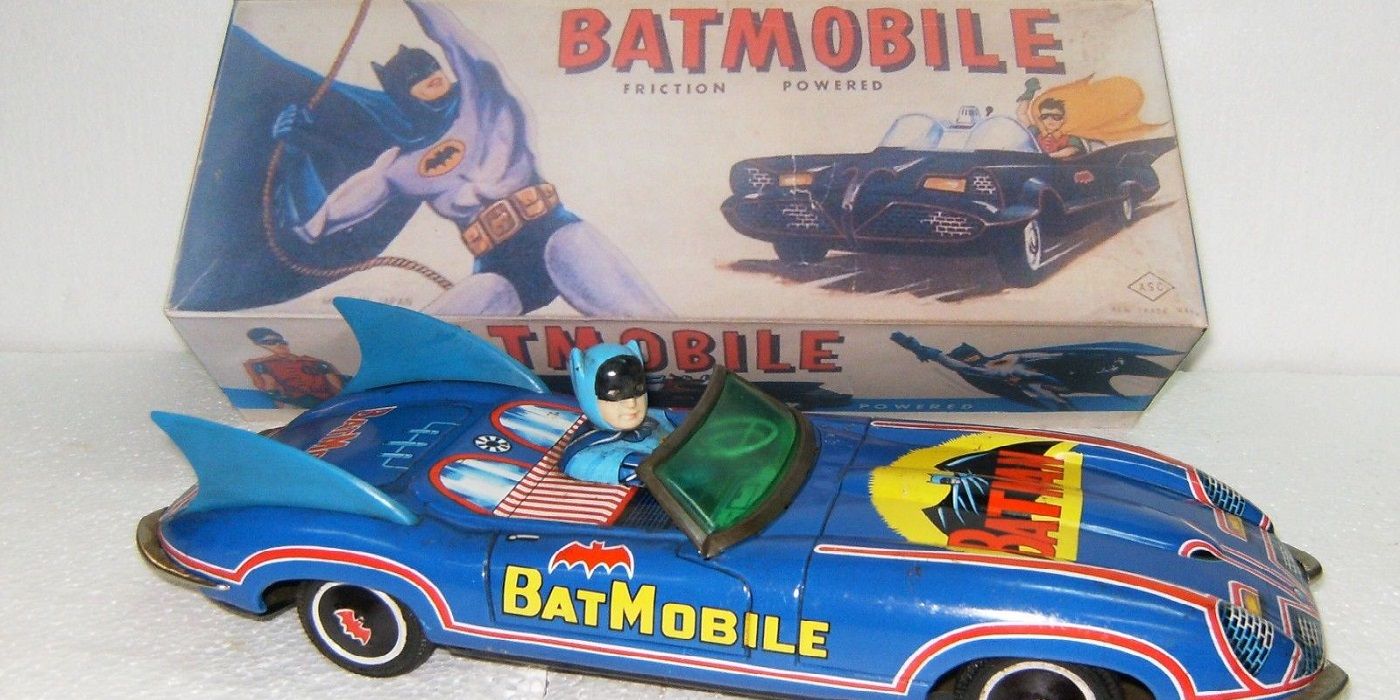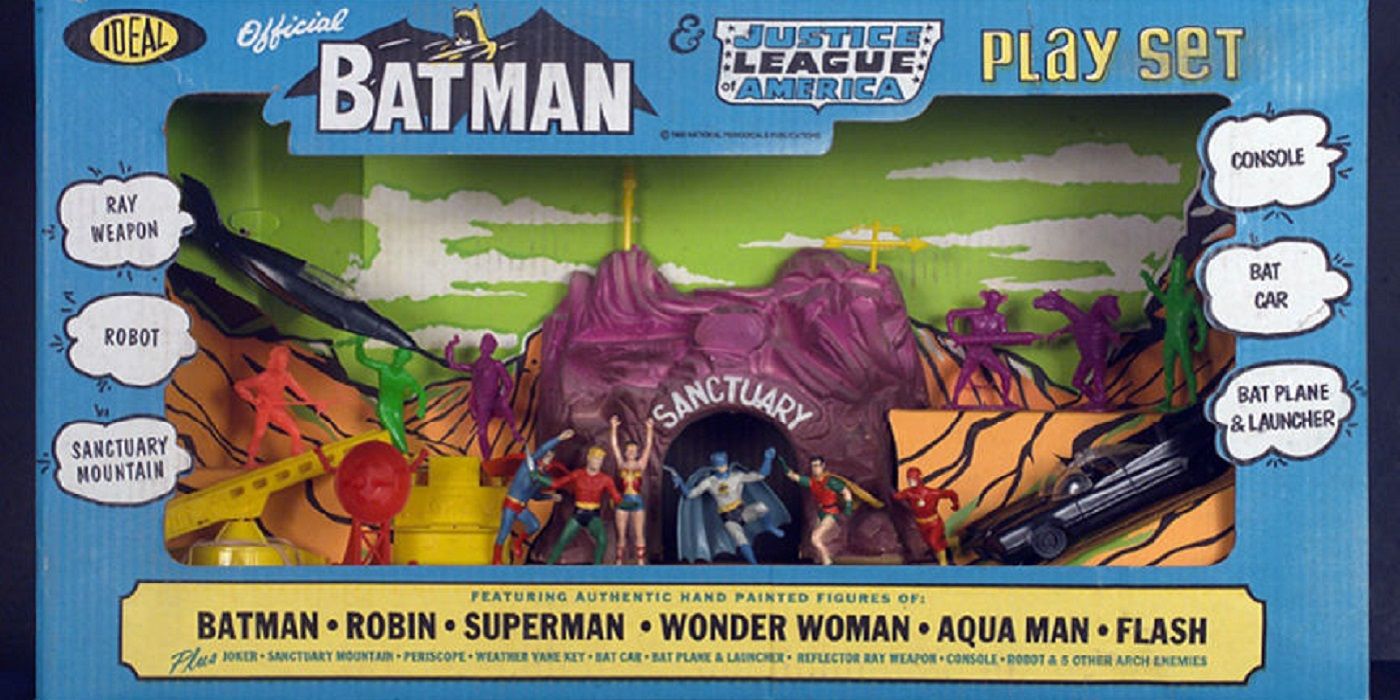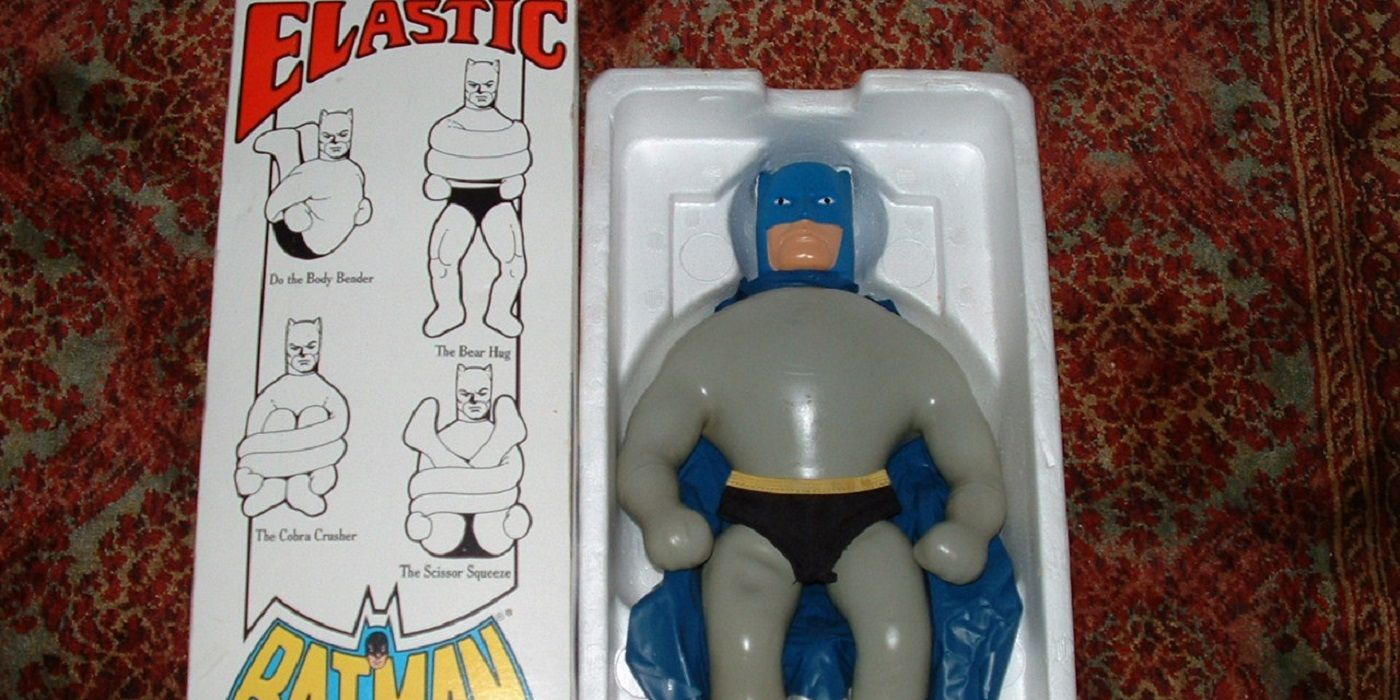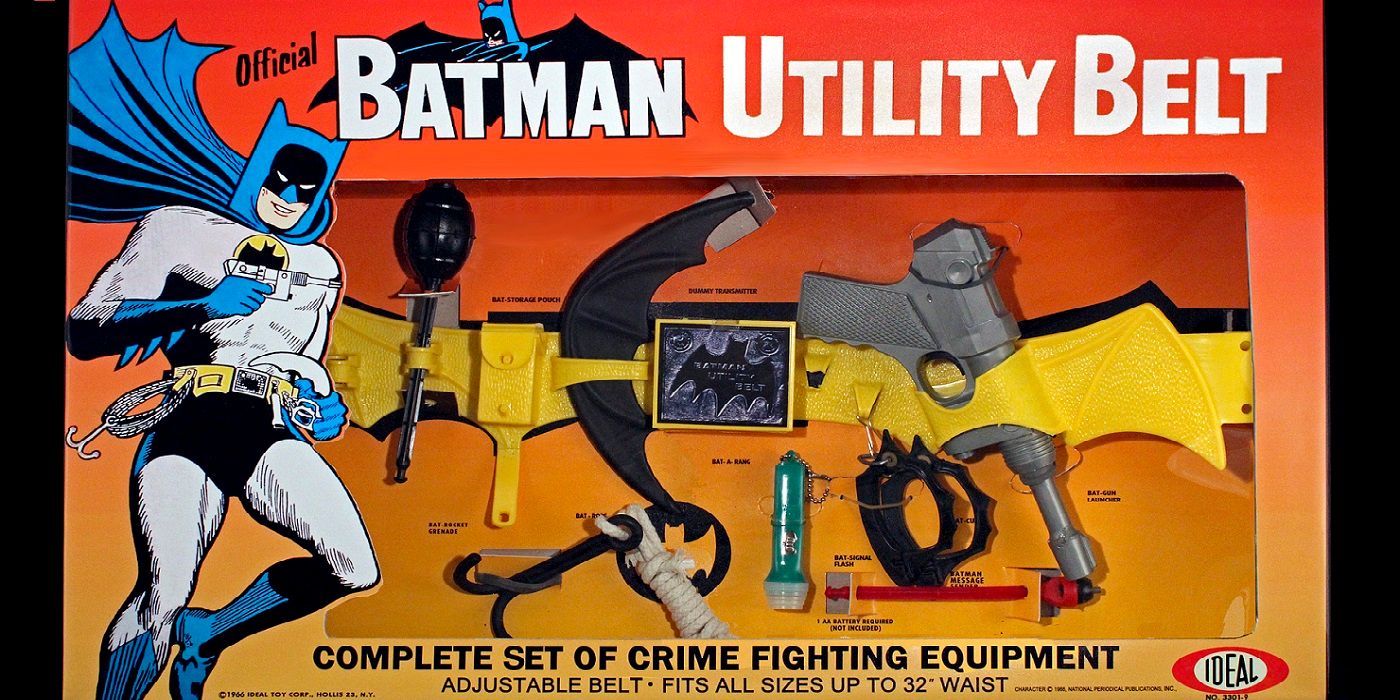Within a year of his introduction in 1938's Action Comics #1, Superman was featured in a variety of toys. When Batman debuted, he quickly joined his World's Finest partner in being featured on some licensed products. However, it wasn't until the 1960s that the perfect storm occurred. Toy production had become more and more sophisticated and prolific by the 1960s, so when you combined it with the staggering popularity of the 1966 Batman TV series, an avalanche of Batman-related toys were released in the 1960s.
RELATED: The Most Ridiculous Batman Toy Armor Ever
In the next 50 years, Batman continued to be a prominent representative on the toy aisles in stores, but when it comes to rare and valuable Batman toys, the 1960s are still the top era. Here, we will count down the most collectible Batman toys of all-time ("collectibility" generally means the most expensive, but sometimes it means items that are very popular on the back market). Do note that we're not talking about stuff like rare statues that cost hundreds of dollars right from the get go or special prototypes that were never officially released. We're talking about actual toys featuring Batman that kids could have purchased that are now worth a lot.
15 1960s BATMAN WATER PISTOL ($350)
While Batman was obviously most popular in the United States, it also, interestingly enough, went over really well in Japan during the 1960s. Today, many of the most valuable Batman-related toys are 1960s toys made in Japan, including this water pistol.
There might technically be other Batman toys that are worth more than this gun, but the absurdity of its design helped sneak it on to the list, as the bizarre decision to have Batman's groin the trigger that you squeeze to make water squirt out of Batman's mouth. That alone has made this one of the most collectible Batman toys from the 1960s by fans who delight in its oddity. This is a hilarious, relatively affordable addition if you're starting a Batman toy collection.
14 AURORA MODEL BATMOBILE ($500)
Aurora was a small plastics company that tried to compete with the big model kit makers like Monogram by releasing cheaper, easier-to-build kits and also trying to appeal to a younger demographic than their rivals. In 1961, they got the license to do kits based on the Universal horror characters and they were a huge success. In fact, they were so successful that they really turned Aurora on to the idea of doing more licensed material, especially licensed material that would tie in with their burgeoning model car market.
Thus the Batmobile license, which became the iconic Batmoblie model kit for generations to come. There are more expensive toys out there, but pretty much every Batman toy collection involves an Aurora Batmobile model in it, sending its collectibility through the roof.
13 KENNER SUPER POWERS BATCOPTER ($600)
Historically, one of the trickiest parts of any superhero action figure line is the vehicles. Anyone can come up with characters to make action figures of, especially when you have an entire comic book company to work with, but coming up with good vehicles can be difficult (this is how you get stuff like Wolverine having a motorcycle with claws on it or Superman having a "Justice Jogger").
Therefore, Batman was a godsend for the Kenner Super Powers action figure line because Batman inherently comes with his own wide variety of vehicles, from the Batmobile to the Batboat to, of course, the Batcopter. This impressive toy design is surprisingly rare, leading to it selling for a lot more than its contemporary Super Powers vehicles, like the Batmobile, the Supermobile and the aforementioned Justice Jogger.
12 CAPTAIN ACTION BATMAN OUTFIT ($1,000)
After coming up with the idea for the first action figure, G.I. Joe, for Hasbro, Stan Weston took the money he made off of that idea to launch his own licensing company, while still working as a freelance toy developer. He got a bunch of major licenses as clients, including DC Comics and Marvel Comics. When he pitched Ideal on an idea for an action figure to compete against G.I. Joe, Weston made sure that his bread would be buttered on both sides, as he helped introduce the idea of Captain Action while also finding a way to work in his licensing business.
Therefore, Captain Action was a generic hero who would wear licensed costumes of other characters, so he could turn from Superman to Batman to Spider-Man to Lone Ranger and back. The toy line only lasted a couple of years, making the original copies rare and quite valuable.
11 SUPER POWERS BATMAN ($1,000)
In the world of toy collecting, one of the major game changers in recent years is the idea of having official graders for toys. The most notable one is the Action Figure Authority, which grades toys on their condition as well as the packaging that the toy comes with. This allows buyers to know precisely what it is that they are buying, which is more and more important in a world where most purchases of collectibles takes place over auction sites like eBay. That makes it quite valuable to have an official source who can confirm the condition of a toy before you buy it.
Tthat is how a Super Powers Batman figure, which is only a little more than 30 years old, was able to sell for over $1,000 recently after grading out as an AFA 80. A non-graded one in similar-looking condition recently sold for almost literally half the price of the graded one.
10 MARX BATMAN PICTURE PISTOL ($1,100)
Something that doesn't really exist anymore outside of Star Wars, which continues to do these for some reason, is the idea of film novelizations. It used to be that every major film got a novelization and a comic book adaptation. This is because of the change in technology. Before you had VHS (and later DVD/BluRay/Streaming), the only way you could ever see a movie is in a theater or if it happened to air again on television. Thus, people wanted other ways of owning a piece of the film that they just saw.
A similar concept existed with television programs, which led to the existence of projector systems like the Marx Picture Pistol, which would "shoot" slides of Batman on to your wall, so you could feel like you were watching Batman even when the show was not on TV.
9 CORGI BATMOBILE AND BATBOAT GIFT SET ($1,500)
Mettoy was a small British company specializing in metal toys that decided to open up a division of its company in Wales in 1956 to produce die-cast metal toy cars. Since its new branch was in Wales, producers decided to name it "Corgi," after the famous dog breed from the area. The company produced toys based mostly on British cars.
Things changed dramatically when it took one of its 1962 Volvo cars and turned it into a "Saint" version of the car in 1965, based on the then-popular British TV series. That was successful, so the company then did the same with its Aston-Martin car and turned it into a "James Bond" car. That one changed the toy car market forever. The car sold millions. Mettoy followed in 1966 with a Batmobile that also sold millions. This Batmobile/Batboat gift set is a rare release of the classic Corgi Batmobile.
8 MARX BATMANCRAFT ($2,000)
The Louis Marx Toy Company was one of the most popular toy companies in the world during the mid-20th Century. Marx was the first toy company to ever produce a traditional Batman and Robin action figure (some die-cast figurines had been made in the 1940s, but not what you would traditionally think of as a doll/action figure). It was a big enough company that it was one of the rare American toy names to expand and produce toys in England, as well.
A popular toy in England in the mid-1960s were toy Daleks, the cyborgs from Doctor Who. Sure enough, then, Marx hilariously took its motorized Dalek models and somehow re-purposed them as a Batman toy in 1966. The "Batmancraft" is utterly bizarre, but in a very good way. It is also quite rare.
7 MEGO WAYNE FOUNDATION PLAYSET ($3,000)
When Mego got into producing action figures of comic book characters in the 1970s, it showed a level of care that comic book fans had not been used to at all at the time. It took some time, of course, as the early Mego designs were a bit more "one size fits all," but as the "World's Greatest Superheroes" line continued to be a success, the builders honed their designs very well.
Perhaps the perfect example of this shocking attention to detail was the Wayne Foundation play set, which they produced in concert with DC Comics (which had Neal Adams do the art for the toy). It is meticulous in its attention to comic book details, with stunning Adams artwork. It was a rare production and is one of the most sought-after Mego play sets ever.
6 NOMURA BATMAN TIN ROBOT ($3,000)
In the first half of the 20th Century, the metal most often used to produce toys was tin. Tinplate was cheap and very easy to shape. One of the major producers of tinplate in the world was Nuremberg, Germany. After World War II, however, Germany's production ability was completely thrown out of whack and would take well over a decade to recover. The United States, meanwhile, had occupied Japan post-World War II and was looking for ways to turn the Japanese economy around. Tinplate production was one of the ideas that they came up with.
So, Japan became the foremost producer of tinplate toys in the world (this is where the phrase "Made in Japan" came into common parlance). Battery-operated robots were very popular in Japan in the 1960s, so a number of Batman robots were made, with Nomura's Batman robot being the most collectible of the bunch.
5 MEGO BATMAN KRESGE VARIANT ($4,000)
We're only featuring toys that a kid could have realistically purchased back in the day, but at the same time, certain official releases are rarer than others. That was the case with the early releases of Mego Batman action figures. When Mego first produced its action figure line in 1972, the toys came in solid boxes. They quickly noticed that kids would tear those boxes open to see the toy inside, so they went to first a windowed box and then a traditional card back.
Batman also originally had a removable cowl. That was quickly changed to a painted-on cowl. The Kresge department store (which would later be known by the more familiar name, K-Mart) had a rare 1972 edition that had a removable cowl on a card back. Its rarity had made it the most expensive Batman Mego toy, even more expensive than the original solid boxed Batman figures.
4 YANOMAN FRICTION BATMOBILE ($6,000)
While battery-operated tin-plated robots were very popular toys produced by Japan in the 1960s, another area where they excelled at the time was in the production of tin-plated friction toy cars. Friction-based toy cars (that is, cars that were propelled forward by winding up the back wheels on a solid surface and then released) had been popular in the United States since the turn of the 20th Century, with Mattel's Hot Wheels friction-based die cast metal cars being the cream of the crop.
In Japan, though, the lighter tin cars could pull off some remarkable speed feats. Naturally, then, Batmobiles were very popular shape choices for these tin cars, with Mount Fuji doing a famous Spirit car (that goes for about $2,500). However, the cream of this crop was the Yanoman Batmobile, which goes for more than double the price of the Mount Fuji car.
3 IDEAL BATMAN AND JLA PLAY SET ($7,300-$15,000)
The Ideal Novelty and Toy Company was formed in 1903 to handle the production of one of the 20th Century's first hit toys, the Teddy Bear, created by Morris and Rose Michtom (which was based on a cartoon about then-President Theodore Roosevelt choosing not to shoot a bear cub that been captured for the President on a bear-hunting trip). With the baby boom following World War II, Ideal was "ideally" positioned with its wide range of dolls for this new generation of little kids.
When Batman hit big in 1966, Ideal put out a seemingly endless series of play sets featuring little Batman figurines and vehicles. Most of them were relatively small, but one of its biggest saw Batman team up with his Justice League teammates in this large play set that is very rare.
2 MEGO ELASTIC BATMAN ($15,000)
So far on the list, outside of the Kresge variant, the rarity of these toys has been organic, in the sense that when the toys have been rare, it is simply a matter of not producing that many of them because there wasn't a large enough demand for the toy. In the case of the Mego Elastic Batman, however, the rarity was artificial.
This is because when Mego released this special edition of Batman in 1979 in an attempt by Mego to reignite interest in its superhero action figures (which had been slowing down a lot in sales), it was sued by Kenner, who made the popular Stretch Armstrong toy that this Mego Elastic Batman was clearly intended to emulate. So Mego pulled the toy after very few were produced, making it a highly sought-after collectible.
1 IDEAL BATMAN UTILITY BELT ($16,000)
As noted, Ideal went in big on Batman in the mid-1960s, not only producing its very popular play sets, but also producing all sorts of Batman-related toys, including figurines, model kits, hand puppets and more. Its most popular toy, though, for collectors, is clearly the Batman Utility Belt. Part of it has to do with how awesome the toy is, as it comes complete with a staggering assortment of cool stuff, from a Bat-Cuffs to a Bat-Rope (with a grapple claw!) to a Bat-A-Rang to a Bat-Signal Flash flashlight.
More importantly, though, is just how hard it is to find a version of the toy in mint condition. The production of the belt was almost designed to fall apart right away, so finding a mint condition version of the belt is like finding the Fountain of Youth. Hence, it selling for $16,000 recently, making it tops on this countdown!
What is the most money you ever spent on a toy? Let us know in the comments section!

